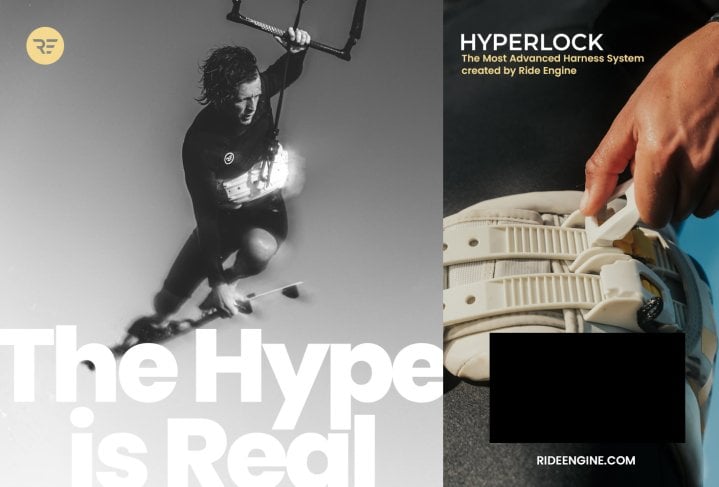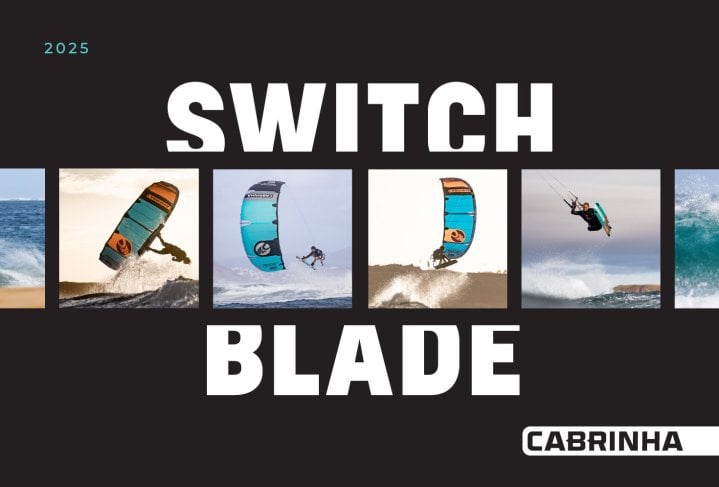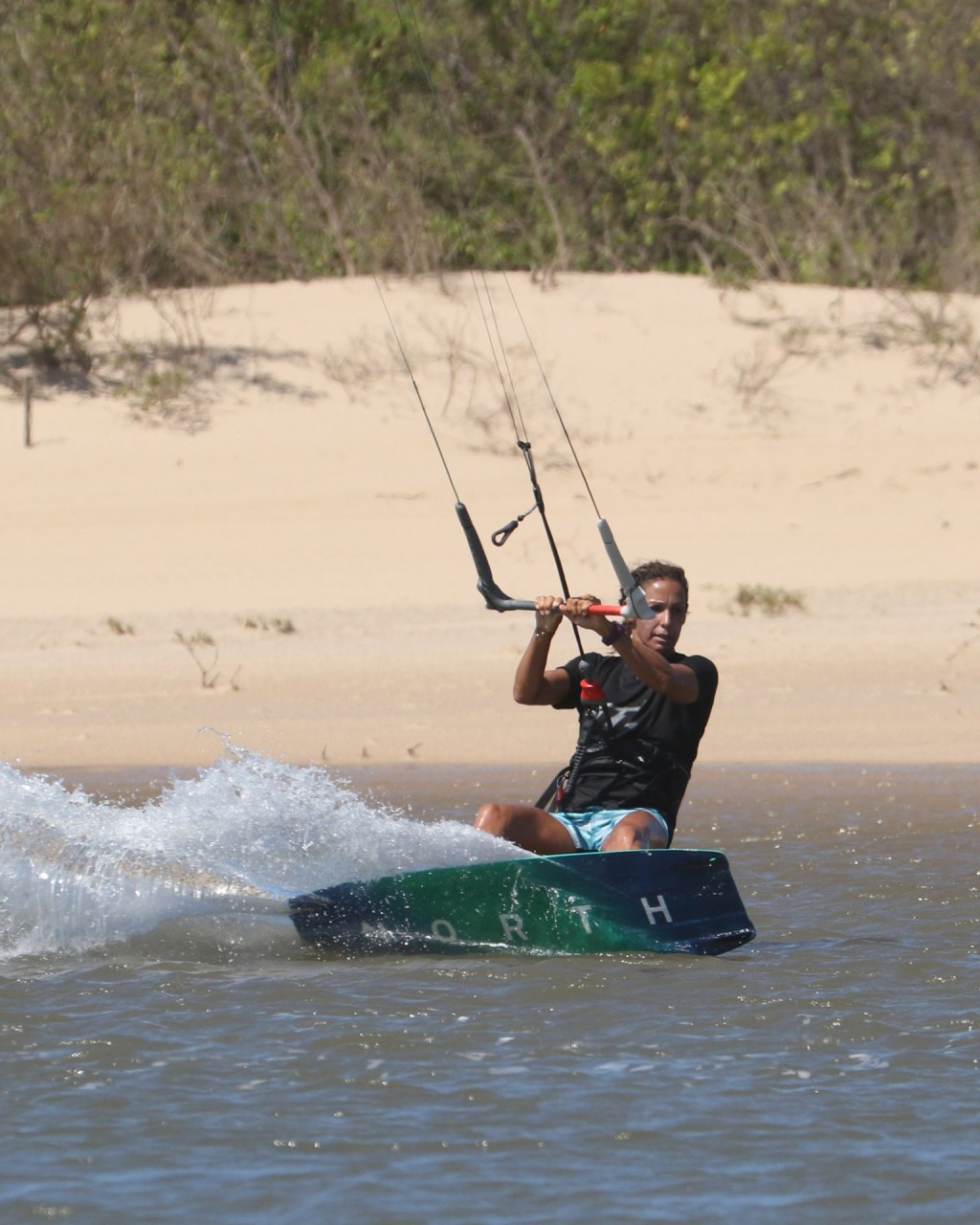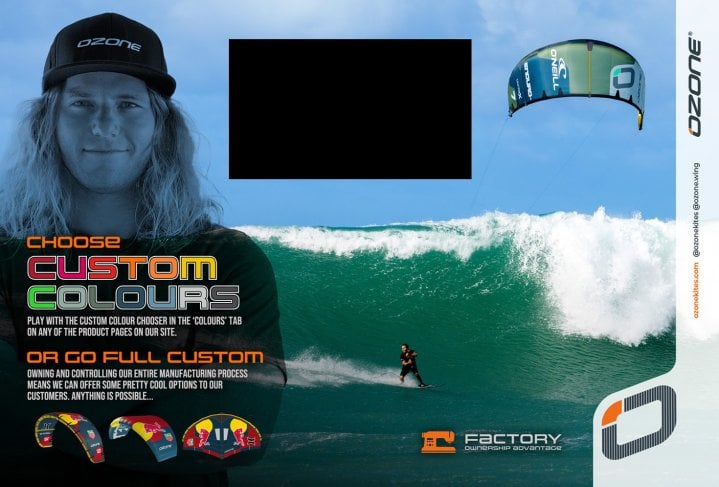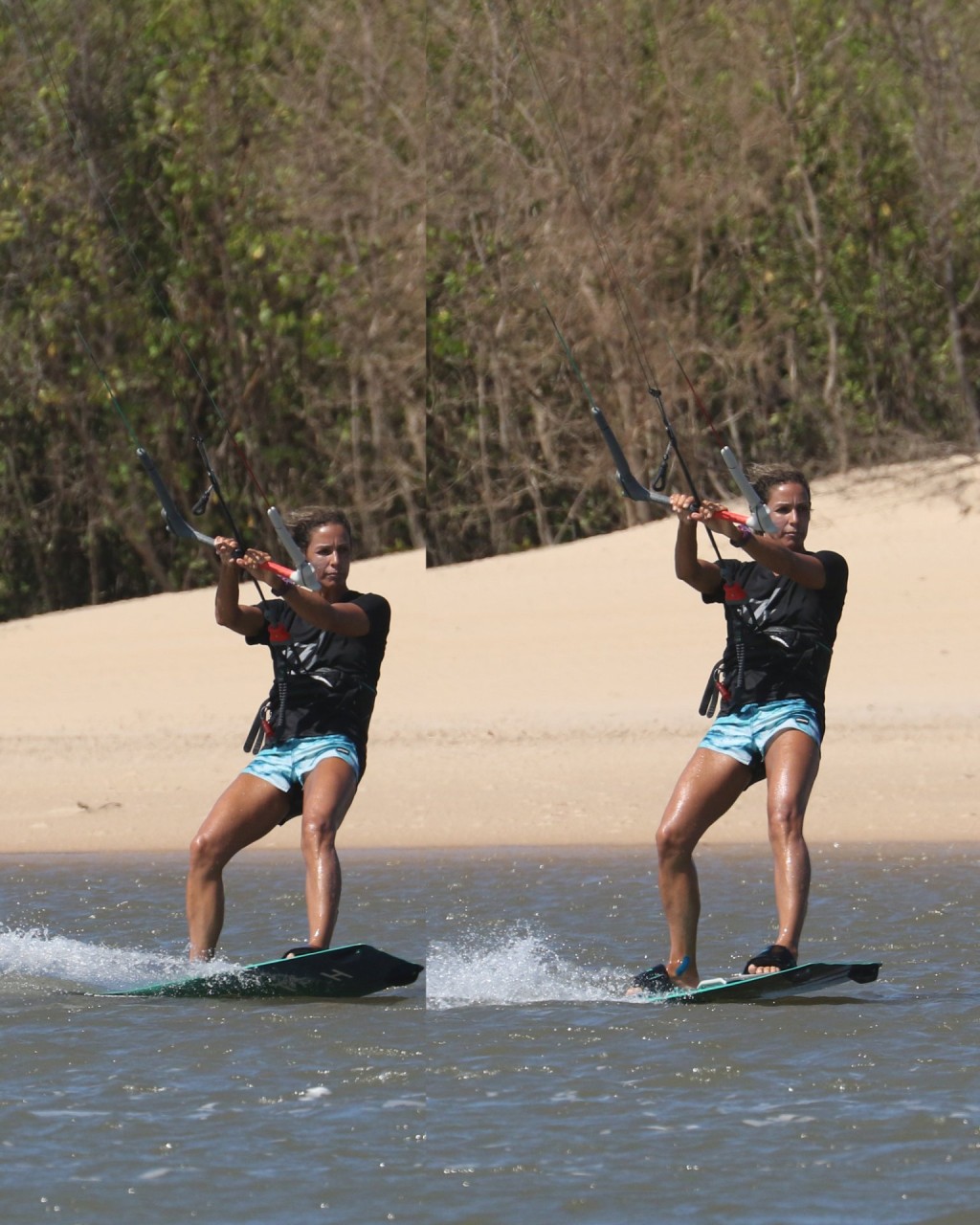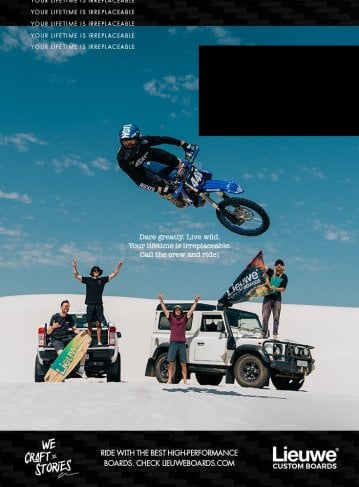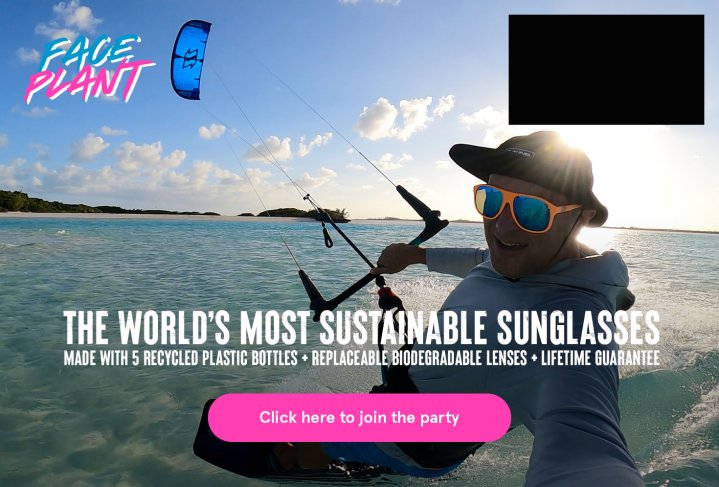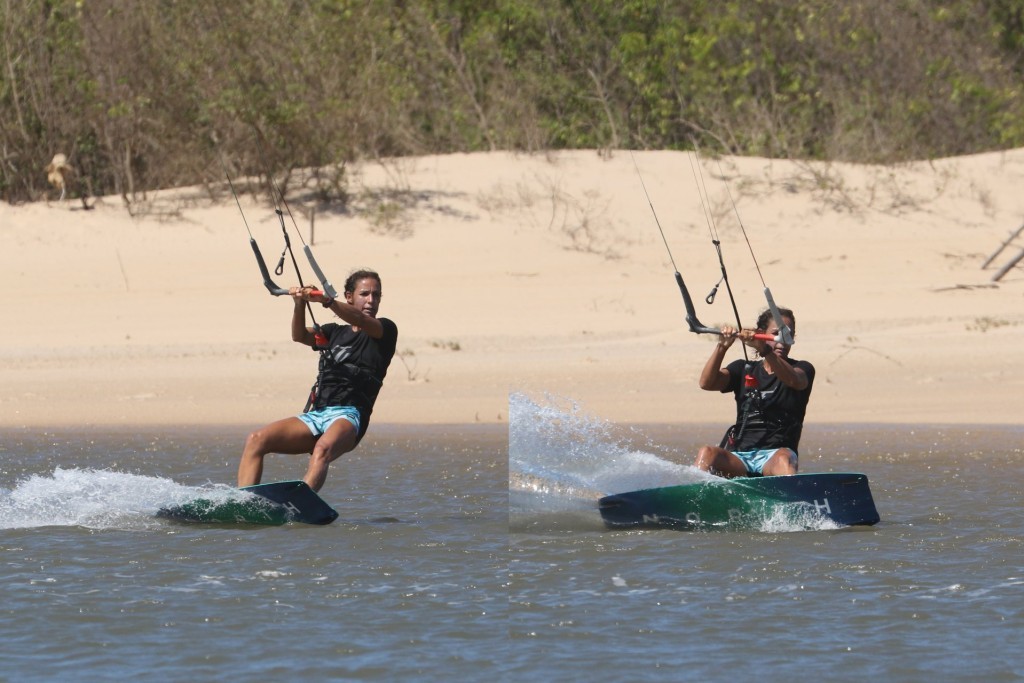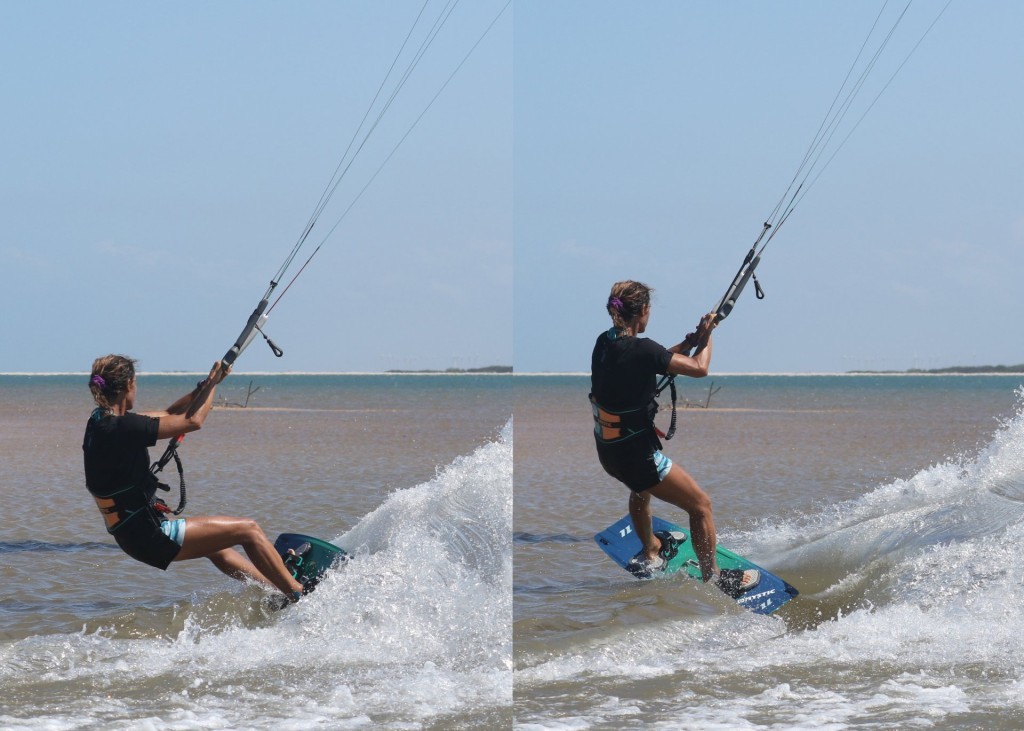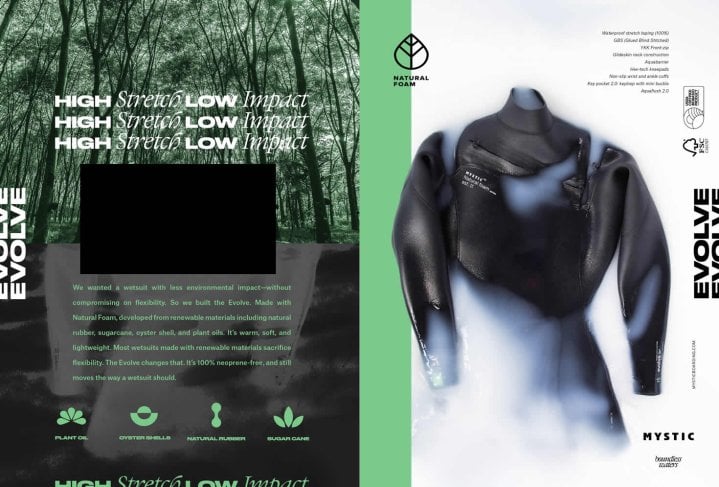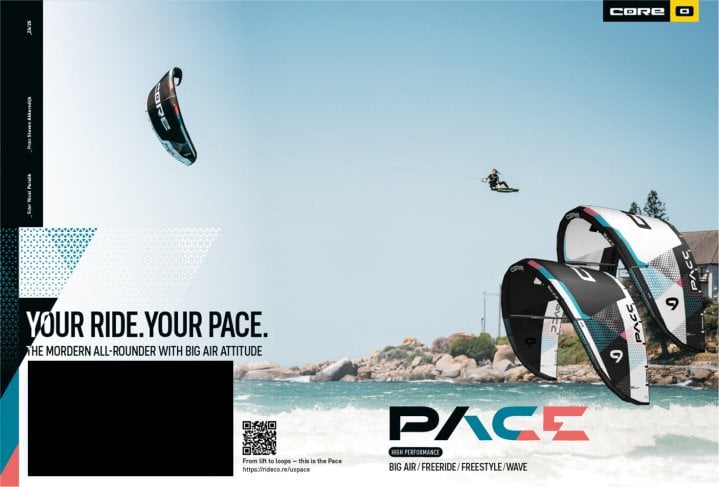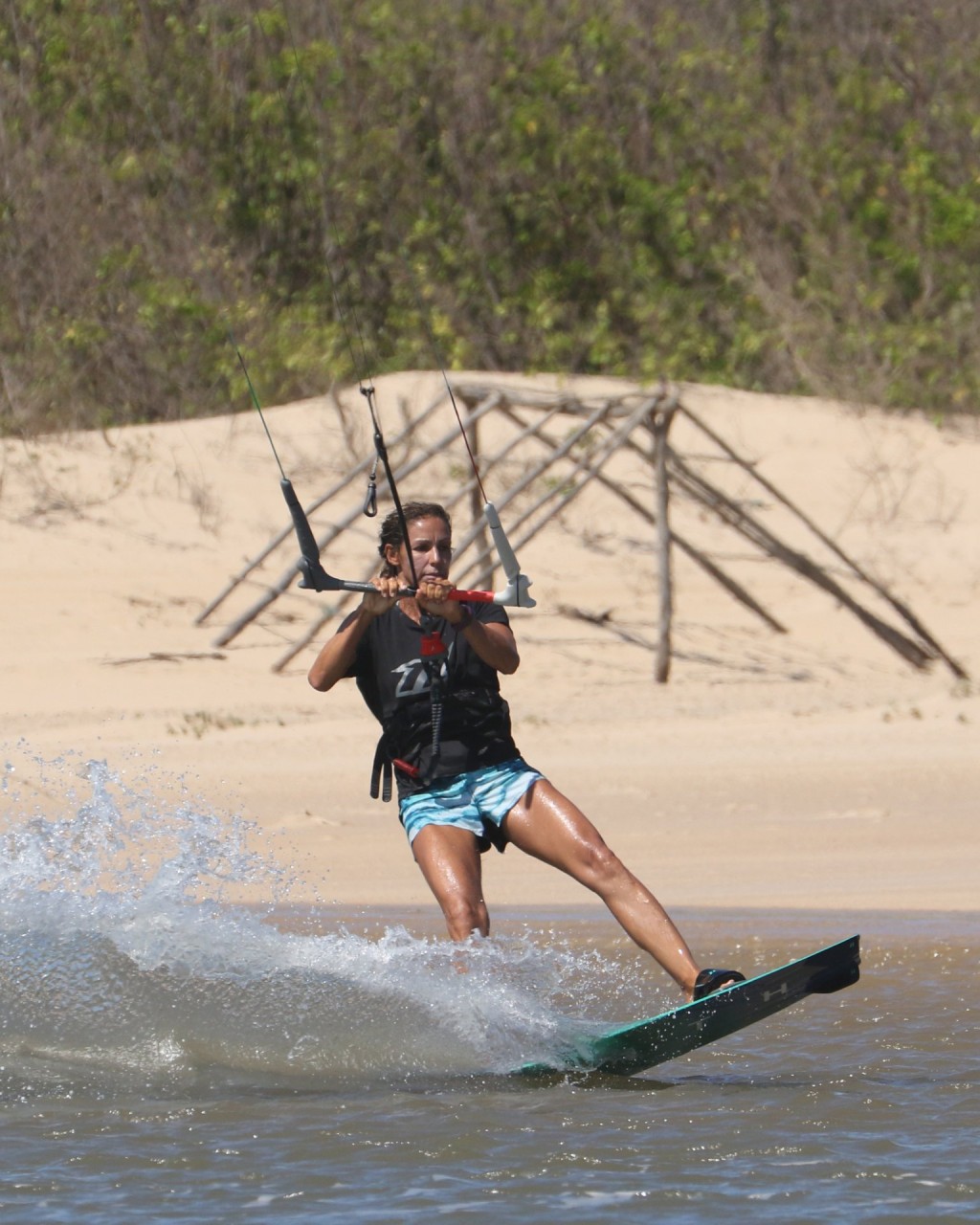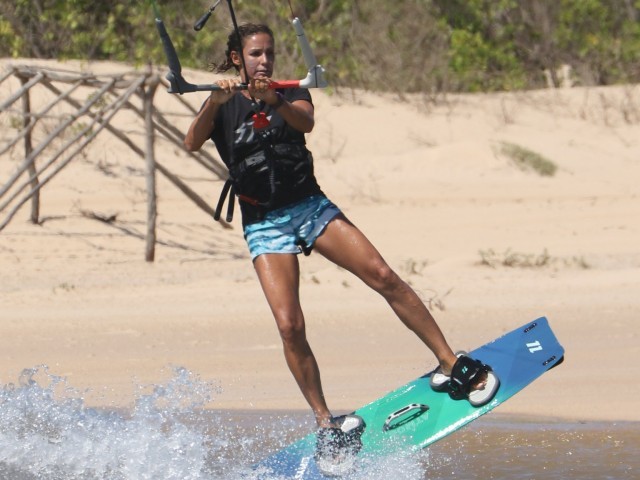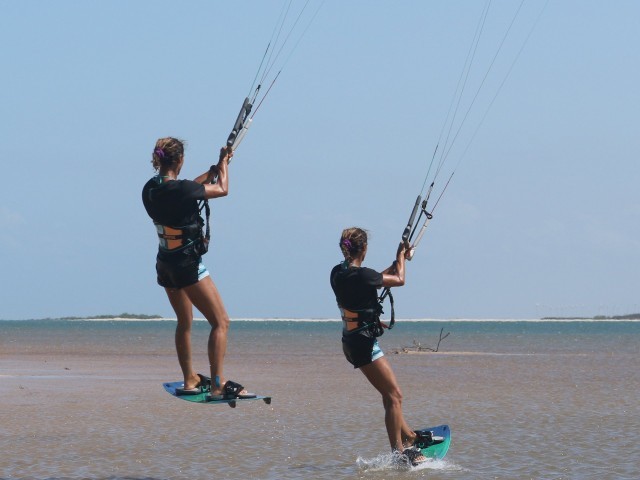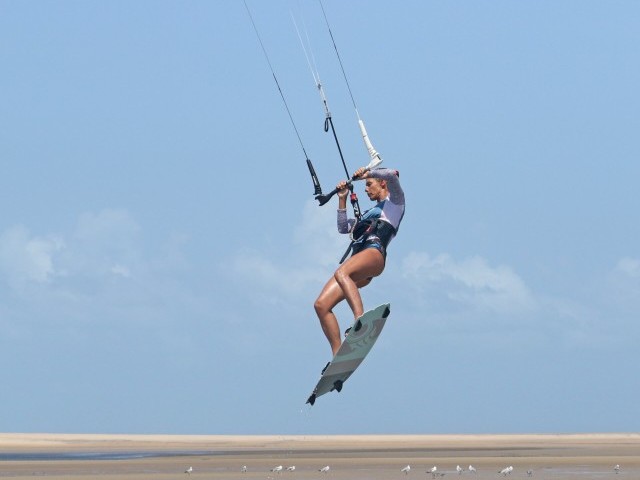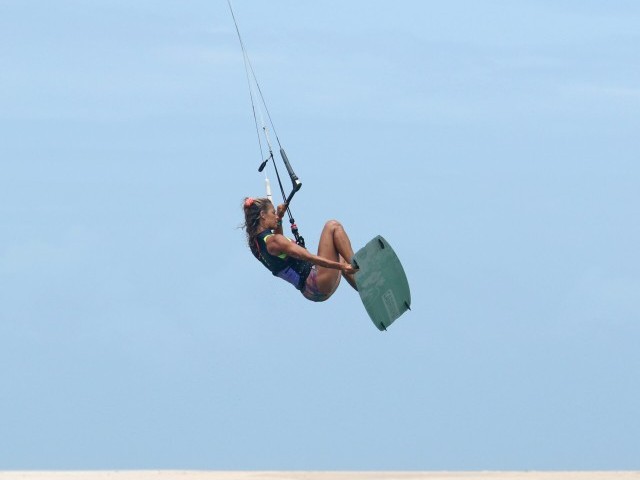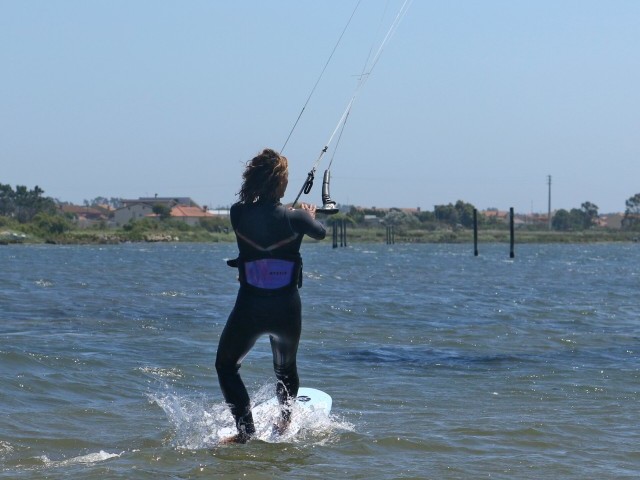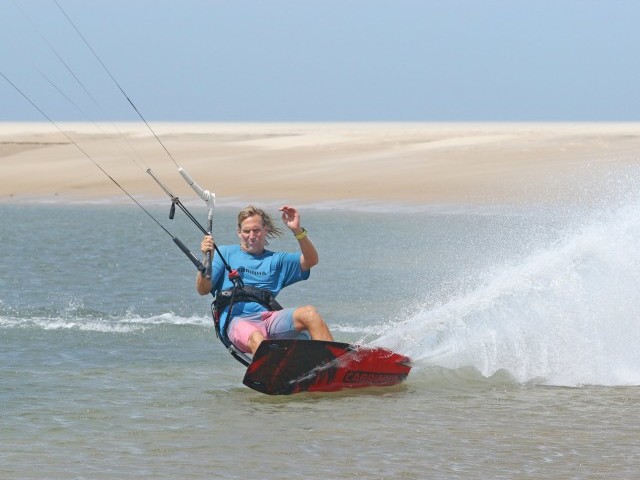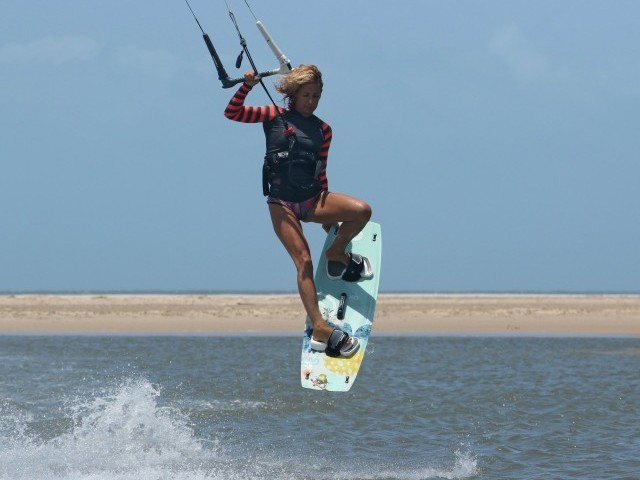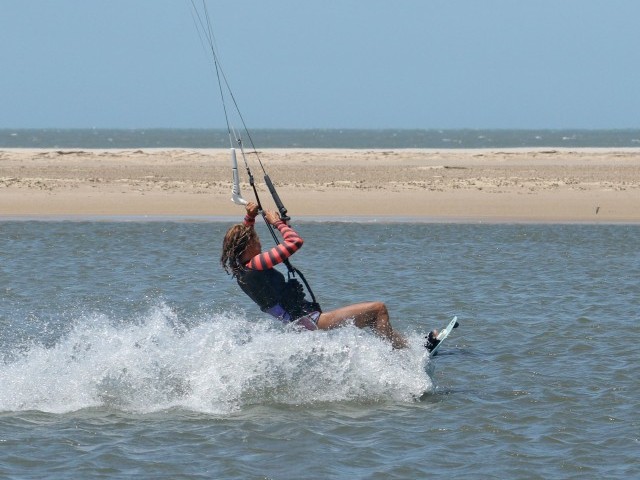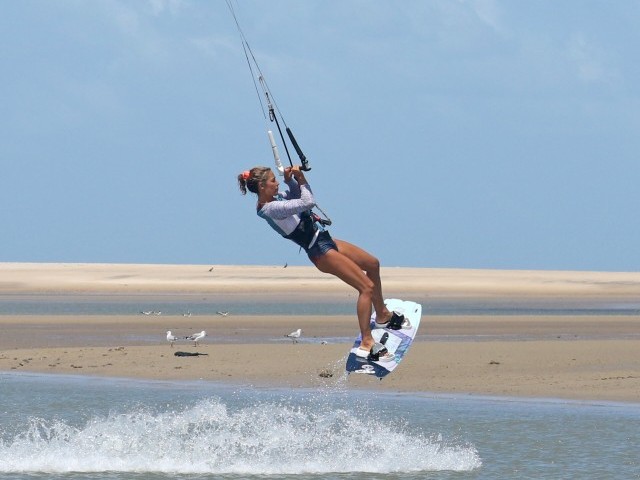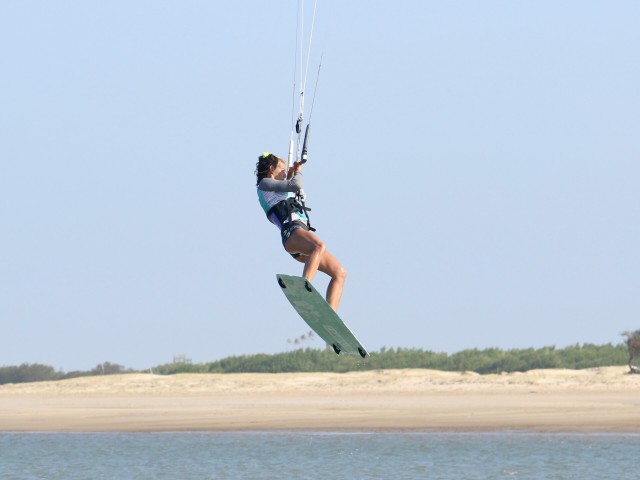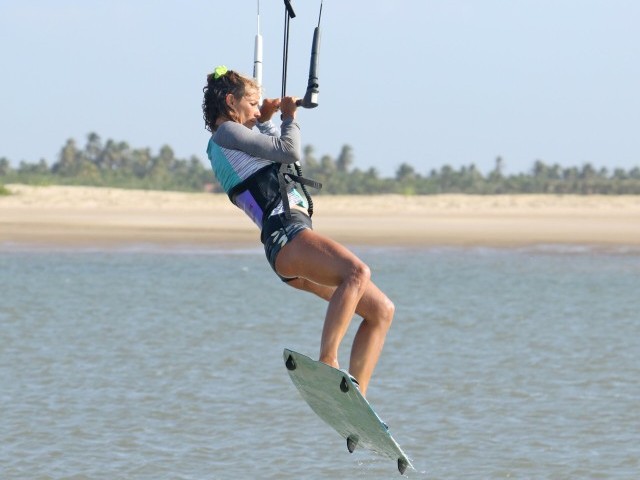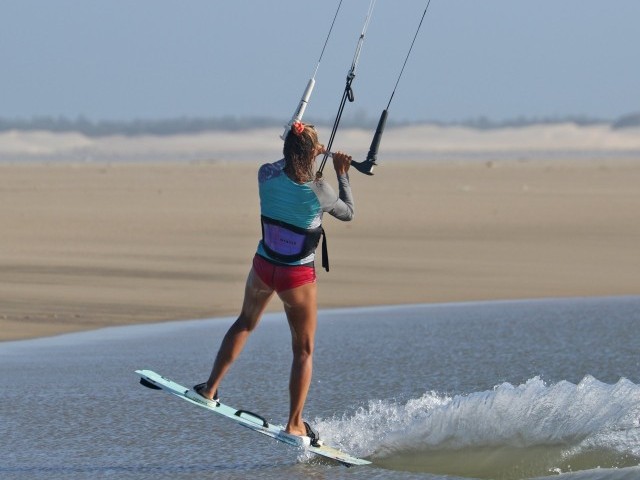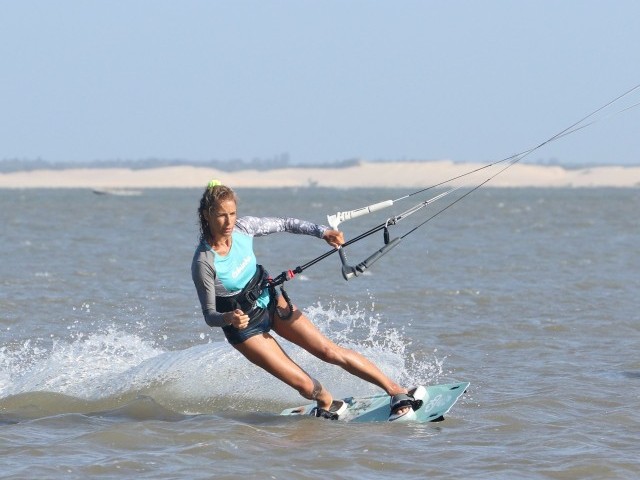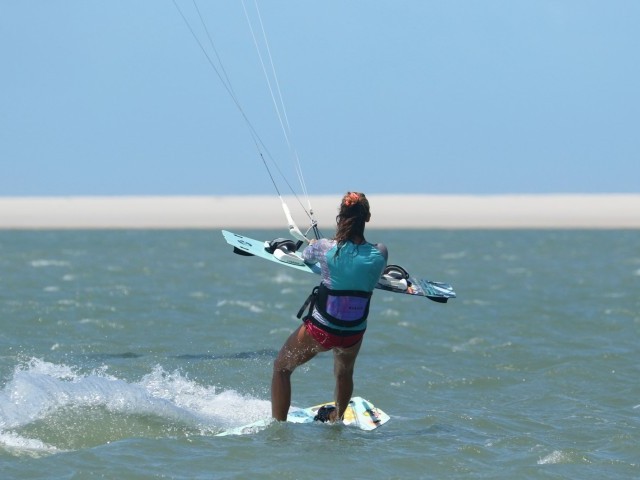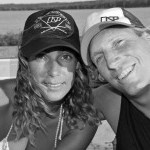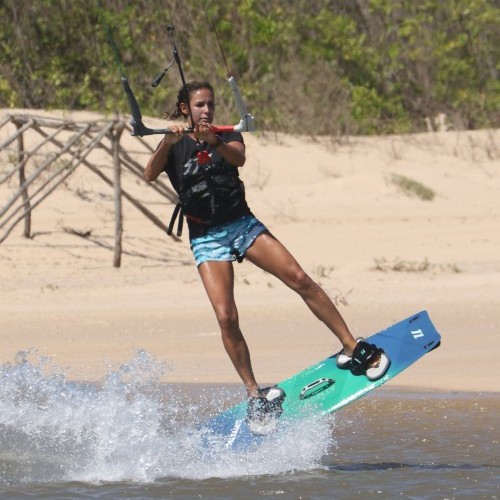
Popping
Technique / Beginner
Introduction
As Kellogg’s so rightly said, “once you pop you just can’t stop”. Popping is an absolutely fundamental skill in kiting, and as far as fundamentals go, it’s potentially one of the most bamboozling. That’s not to say that popping is super difficult, but there’s a lot going on and when you come to learn it, you’ll be bombarded with all sorts of advice and terminology that can tilt the most pleasurable pastime towards a frustrating smorgasbord of dilemmas. It’s well worth pursuing, as once you nail it, doors will literally swing open to a world of new tricks and you can apply elements of it to your jumping too.
We will, as always, run through the separate parts which make up the move. However, seeing as popping is a fundamental, we’ll also concentrate on a few design features of your equipment, so that you can understand what’s going, which in turn should make the learning process a whole lot smoother. And we’ll add a tad more theory, so please bear with us, we’ll eventually get to the nitty gritty and you should then be primed and ready for it.
Before we start though, let’s agree on what we mean by popping here, so that we’re all singing from the same sheet and know which manoeuvre you’re about to embark upon. By popping we mean getting yourself off the water using only your board, no ramps, waves or wakes and no sending of the kite. You’re going to get a bit of daylight between the surface of the sea and the bottom of your board – hell yeah! That said as you’re learning we will be making things easier, so forget those images of boots and low kites...
A Super Brief Theory of Board Design
First things first. We need to establish the difference between edging and carving, both as words and actions. By edging we mean resisting the power in the kite and riding in a fairly straight line from A to B, normally upwind. By carving we mean turning the board, steering it. You can carve upwind and downwind, left or right, like cornering a car. Here we’ll be concentrating on carving upwind. Most modern twin tips will have a flatter planning area between the feet and a bit of rocker, curve, tail and nose kick at each end. The flat bit helps us get going and we use it to edge upwind, the curvy rocker helps us carve. However not all boards are equal, some are better at edging as they are straighter, think a light wind door, whilst others are better at carving, think a more wakestyle rockered board. If you’re reading this, you’ll hopefully have something in-between. So, what’s the point of this admittedly short theory session? Well if you want to pop, there is carving involved, and to carve correctly you’ll need to use the correct part of your board.
The Set Up Pic A.
Assuming that you are happy edging, can control speed and vary your direction of travel you’re ready. In a perfect world you’ll have some flat water, be comfortably and confidently powered and the sun will be shining. To get into pre pop position, set your upwind edge as normal. From here you can then jiggle a few things. First off, your sweet spot. You want it within reach, so that you’re able to ride upwind with your shoulders back. If you’re bent over whilst riding, you’ll be really out of position when trying to pop. Kite wise you need to be able to edge, but when you do pop it’ll be brilliant if the kite can help you. Around 11 or 1 o’clock, a tad higher but no lower. Get your hands narrow on the bar, close up against the centre depower rope or plastic, this will help you keep the kite still when you’re popping. As for your lower half you need to get on that curvy tail, so flex the back leg and move your hips back on the board, towards the tail. As you do so your front leg will straighten a bit. What you’ll notice is that the nose of the board will start to ride higher, a very subtle wheelie, because you’re resisting against the board with your weight further aft. Don’t overdo it, else you’ll slow down. And finally, your back foot. For popping you only have a complete foot so that you can keep the board on:) You only need a heel. To make the most of your heel, you back foot must be across the board, or pointing slightly backwards. It’s very natural as you move your hips back to twist them forwards, which will pull the back knee forwards and twist your back foot in the strap. More of a hard boot slalom snowboarding stance than a twin tip popping stance. If you do this your weight is on your foot, not your heel. We need your heel for this.
Now looking at Karine as an example. She’s edging with some speed, her kite is parked at 11 o’clock, hands are close to the centre of the bar and the sweet spot is positioned so that the bar is very reachable. Her weight is low and whilst resisting she’s moved her hips back over the rear footstrap, which lifts the front of the board. Her back leg is flexed, front leg almost straight. But her hips haven’t twisted which means she can keep her back foot across the board and resist through her heel.
That’s it, game on. Now that we’ve got that covered, let’s get down to the bare essentials and learn to pop!
Your Approach Pic B.
We mentioned carving upwind. However, you can’t just ride along upwind and then carve into the wind. Why not? You’ll come to a grinding halt. To combat this, you must start from a different course, you need to bear away, turn downwind slightly so that you’re riding just past across the wind. The beauty is you don’t actually have to worry about the angles, as long as you flatten the board, the kite will pull you in the correct direction. To flatten the board, relax, stop edging and resisting, and allow the kite to pull you up and onto your board. As it does let off some power so that you don’t get pulled all the way upright. Your point of focus here should be on keeping your wright back on the curvy bit. You can do this gradually. If you look at Karine, she’s let the kite pull her up onto the board, but she sheets the bar out a little so that she’s still upwind of it on the gentlest of edges. However, her weight is back, and her nose is up. From here she gently relaxes her back foot so that her weight moves from her heel, forwards onto her foot. You can see how her board has changed direction. However, she’s not trying to carve off downwind. This would move her weight across the board and make the next part of the pop very difficult. Yet again don’t look at the pros for inspiration here, Liam rocks but you’ll struggle to set up for a pop like him and all those crazy kids.
Carving on the Curvy Bit Pic C.
Now that the board is flat, the kite will have pulled you off the wind (towards it) and you’re ready to pop. The first stage of your pop is the carve back onto an edge. The point of carving is twofold. Firstly, it will put tension back on the lines, which will give you something to pop against. Secondly as it puts you back on an edge, you will have something to stamp against with that patient heel of yours. The tricky bit here is that you’re trying to carve from the flat of the board to a launch pad of an edge in the minimal amount of time. You don’t have to carve far, just far enough to feel some resistance. Any further and you’ll either slow down or the kite will pull you and you’ll lose you position. If you were to read “carve - pop”, that’s the timing (assuming you read at our speed of course). And this is why the wheelie is so important, and the gently coming off the wind. If you carve off the wind, you’ll get all your weight on both feet and almost onto the other side of the board. Which means it’ll take you an age to get back into position as you carve back up. Great for Back Mobe 7, horrible for a first pop. By keeping your weight back and upwind of the board you’re literally dropping back onto your edge, and as you do so the board will carve up automatically and you’ll be in a balanced position to pop. Looking at the picture, the two images are a fraction of a second apart (4/10ths to be exact). Karine drops her weight upwind, bum low, shoulders up, resists and the board turns. Try not to pull on the bar, as it will prevent you from carving up.
The Pop Pic D1.
So, what is this mythical pop? You may have heard of edge and release, well that’s definitely not it! We’ve already edged and released to go bear away from the wind. The pop is a very aggressive stamp against the heelside edge of the board with your back heel. You’re not actually trying to jump up, you’re trying to kick yourself up wind against the edge. It’s an explosive extension of the back leg. It’s tempting to wait for something to happen, but nothing will. You have to make it happen and it has to happen quickly. Look at Karine, you can see that she carves up with her back leg flexed and then kicks against the board, straightening her back leg. If we showed you the next frame it would look like she’s jumping up or forwards, but that is the kite pulling her. In essence, this is the pop, a small but aggressive carve instantly followed by a humungous kick. Only once you kick can you pull on the bar.
Looking at D2 from a downwind perspective, yet again Karine is stamping against the board, “carve – pop”. As soon as she extends, she pulls a tad on the bar for help, but it’s not compulsory.
Walk Tall Pic E.
This is the moment directly after take-off. Karine carved into her pop with a flexed back leg and a pretty straight front leg due to her weight being back on the board. Now she’s fully extended. If you’ve ever tried a standing jump, or had a go at high jump, you’ll know it’s about using everything you’ve got extending from your feet all the way through your body and into the very hair follicles on the top of your head. You may be tempted to try and get your board off the water, or higher by flicking your heels up behind you, or lifting your knees in front of you. When you practice this stay extended, that way you will extend. If you’re dreaming of one day banging out a Raley, it’s much the same, just heavily exaggerated and with more power. The stamp and the kite do the work. You’ll know if you’re extending well as you’ll feel that you’re getting thrown forwards onto your front foot in the air. This is a good thing.
Coming Down Pic F
Another joy of popping is that you’ll experience one of the benefits of gravity. Everything comes down naturally. As you haven’t used the kite, you’ve unwittingly propelled yourself upwards, with nothing to hold you up there. As long as the kite didn’t move as you carved, you will succumb to the law of physics and everything will drop to earth. The surprising bit that Newton never knew, is that the mass of the Earth seems to have a greater effect on the board and your feet, as they always swing down underneath you. Much like jumping off a doll’s house, there isn’t far to fall so the landing should be relatively gentle. That said it’s good practice to land tail first onto the flat underside of your board pointing slightly off the wind. You can assist this by dipping your kite down, but by the very nature of changing direction before the pop, your kite will have dropped deeper in the window and it will be pulling you that way. It helps if you look downwind and if you turn your shoulders and hips to follow the kite as Karine doe here, you’ll enjoy the most Marshmallow of landings.
Top Tips
Looking at this for the first time you may be thinking that’s quite a lot to take in. Realistically and hopefully, the background reading should simplify the actual physical movements. First time out have your kite high, find the flat water, go slowly, do little movements and build up. When your fins get a chance to gulp some air you’ve done it. The more you exaggerate the movements, the more aggressive the pop. Like everything it’s a work in progress and the start is exactly that, the most wonderful of beginnings.
Have a look at the videos, take in the sequence and once you get up from reading this, hop around with your front leg held out straight in front of you. You’ll reap the rewards.
Common Problems
Slowing down before bearing away. If your hips are too far back, you’ll sink the tail rather than merely lift the nose, so find the balance.
Losing control when bearing off the wind. As you stand up you need to control the power in your kite. When you’re edging you can hold a lot. However, if you’re intending to stand on a flat board you won’t want or need as much. Sheet the bar out as you flatten the board.
Stopping when carving up. This is a sure sign that you’re softening and not resisting. The back leg may be flexed, but it should still be strong. You front leg remains relatively straight because your weight is back. However, when carving, because you’re dropping your weight, it’s tempting to sit and bend both legs. This way you’ll roll over the board and have no resistance to carve the board up, even for that short moment.
Getting pulled over the board before you get a chance to stamp. Either you’re pulling on the bar, so leave it out. It’s possible that your bar is trimmed too far away so you can’t get in a dynamic position to carve, so trim it in. Also, if you carve too long and wait for a miracle the kite will eventually pull as you continue to carve away from it. “Carve – Pop”.
Keystones
- Hips back, foot across
- Gently bear away
- Short sharp carve
- Almighty stamp through heel
- Extend completely
This technique article was in Issue 84 of IKSURFMAG.
Related
By Christian and Karine
Christian and Karine have been working together as a coaching team, running improver to advanced kitesurfing clinics since 2003.




